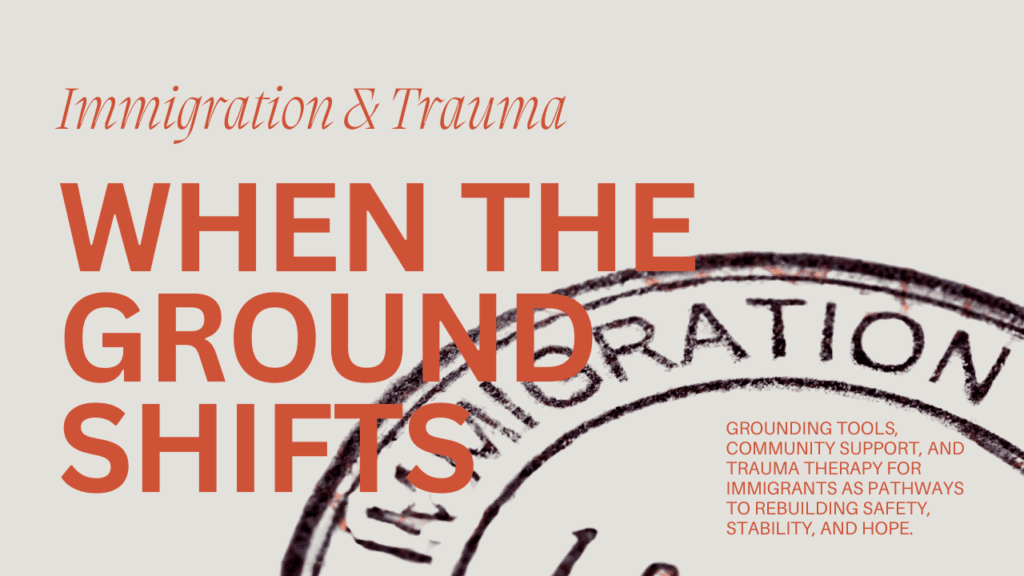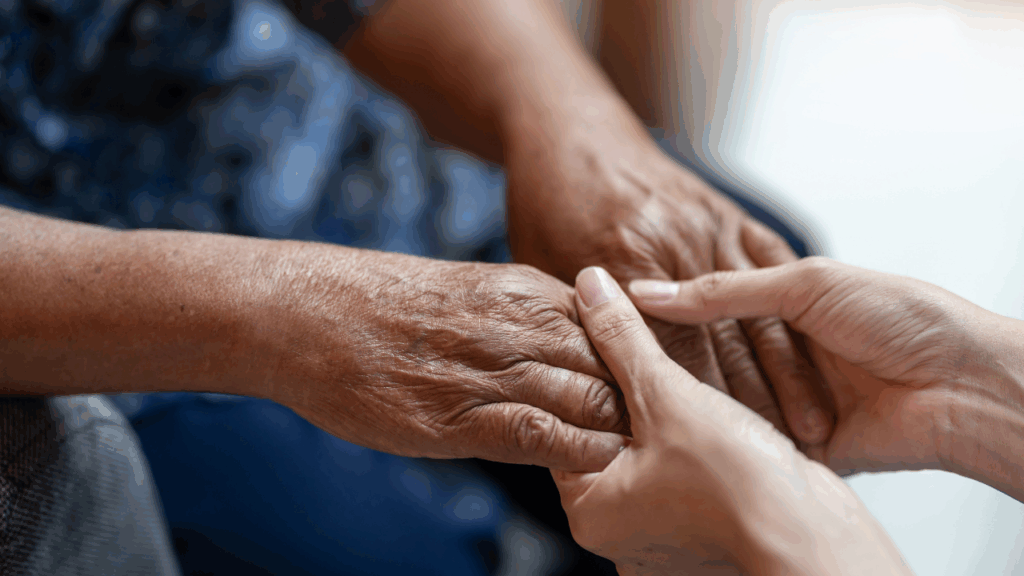
We have learned that trauma is not just an event that took place sometime in the past; it is also the imprint left by that experience on mind, brain, and body… It changes not only how we think and what we think about, but also our very capacity to think.
— Bessel van der Kolk
Trauma is not the thing that happens to us. It’s what happens inside of us as a result of what happens to us. Gabor Maté’s words stay with me whenever I sit across from someone in my therapy room who is quietly carrying the invisible weight of displacement, of separation, of fear that is renewed with every breaking headline.
In 2025, we live in a near-constant state of alert. Our phones deliver a steady stream of news—heated political debates, sudden policy shifts, images of raids, leaders making promises that fracture entire communities. For immigrants, this isn’t just information. It’s a pulse of dread. A reminder that the home you’ve built can be questioned, disrupted, or taken away—at any given time.
Note: Immigration and immigrant experiences are deeply nuanced. This post cannot capture the full complexities of every immigrant group’s story. The history, personal circumstances, cultural context, and political realities surrounding immigration vary greatly, and shape how each person experiences safety, belonging, and trauma. My hope is that these reflections offer recognition and tools, even as I acknowledge the limits of speaking to all experiences.
Why this is traumatic for many immigrants
As Bessel van der Kolk writes, “The essence of trauma is that it is overwhelming, unbelievable, and unbearable.“
It awakens the body’s most primal survival instincts—and can keep them switched on. Being traumatized means continuing to organize your life as if the danger were still happening. Every new event is filtered through the memory of threat.
In recent months, many immigrants and clients I’ve spoken with have felt the ground beneath them shift. Work authorizations delayed. Visas stuck in endless review. Job cuts and layoffs. The anxiety of wondering if you’ll be able to stay, work, provide for your family. The loss of the future you’ve been quietly building.
Safety and stability—two of the most basic human needs—start to feel like luxuries that you’re staring at from a distance as it slips away from you.
The ripple effects inside the body and mind
In my practice, I’ve seen a sharp rise in trauma symptoms among immigrants—both those directly impacted by policy changes and those who are bearing witness within their communities.
Some describe hyper-vigilance so constant that even rest feels unsafe. Others are plagued by nightmares or intrusive thoughts that play out worst-case scenarios on a loop. Many describe compulsive behaviors—checking documents over and over, frantically researching the latest immigration updates—to claw back a sense of control.
There’s often a pendulum swing between states:
- Hyperarousal — panic, restlessness, the inability to relax when the future feels precarious.
- Collapse — the heavy weight of despair, isolation, and the sense that you are unseen and unsafe.
And always, the underlying truth: tomorrow feels unknown.
Coping in the midst of uncertainty
Neuroscience tells us that to change how we feel, we first have to notice what we’re feeling. Physical self-awareness is often the first step toward reclaiming our agency.
As I often remind my clients in trauma therapy for immigrants, your symptoms are not signs of weakness. They are normal responses to abnormal circumstances.
Here are some anchoring practices I return to in my work:
1. Mindfulness
A gentle check-in with your body can be a lifeline. Try the mindful “SEAT” practice:
- Sensations — What is your body telling you?
- Emotions — What feelings are here right now?
- Actions — How are you moving or holding yourself?
- Thoughts — What stories are looping in your mind?
2. Grounding
Reconnect to the present through your senses: Breathe. Walk barefoot on grass. Press your back to the floor and look at the ceiling. Hum a song. Dip your feet in cold water.

3. Orienting
Look around you. Name five things that catch your eye. This simple act cues your nervous system that, right now, you are here — not fully safe, but safe enough.
4. Connection
Call someone you trust. Share a meal. Walk together. As Bessel van der Kolk writes, “Being able to feel safe with other people is probably the single most important aspect of mental health.” If people aren’t available, connect with your dog or cat — look into their eyes and let them look back in yours.
5. Community
Immigrants often carry a silent homesickness—missing food, smells, voices, the comfort of shared traditions. Seek out others who understand. Share stories, cook together, celebrate your holidays. In community, being far away from home feels less like a void and more like a bridge.

6. Practical support
If possible, consult an immigration attorney or local advocacy group. Keep documents current. Knowing your legal footing can soften the edge of uncertainty.
If you’re looking for where to start, here are a few resources:
- American Immigration Lawyers Association (AILA) — A national network of immigration lawyers. Their public directory can help you find an attorney in your area.
- Immigration Advocates Network — A free directory of nonprofit immigration legal services, searchable by state, language, and type of case.
- National Immigration Law Center (NILC) — Advocacy, policy updates, and immigrant rights resources, plus connections to legal support.
In Closing
Self‑compassion, as Dr. Kristin Neff teaches, can hold us steady like an anchor and guide us forward like a compass. When the days feel heavy, we can stop—just for a moment—and offer ourselves a self‑compassion break with:
1. Mindfulness — Notice what’s here without turning away.
2. Shared humanity — Remember: you are not alone in this.
3. Kindness — Offer yourself the gentleness you’d give a friend.
To live with immigration trauma is to live with a courage you may not even recognize in yourself. You’re carrying more than most will ever see — and still, you are here.
If you’re seeking a space to process and heal, my practice offers trauma therapy for immigrants, a place to be witnessed, held, and supported as you navigate both the outer realities and inner landscapes of your story.
Please feel free to reach out.